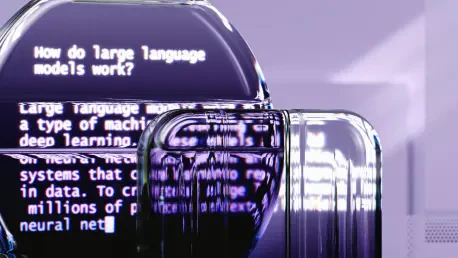Meet Marco Gaietti, a veteran in management consulting with decades of experience in business management. His expertise in strategic management, operations, and customer relations has helped countless organizations navigate complex transformations. In this interview, we dive into the growing challenge of transformation fatigue in 2025, exploring its causes, particularly the role of rapid AI adoption, and its impact on employees and companies. Marco shares actionable insights on how HR and leadership can address this issue, the pitfalls of mismanaged change, and strategies to turn constant upheaval into sustainable progress.
How would you define transformation fatigue, and why has it become such a pressing concern in 2025?
Transformation fatigue is essentially the exhaustion and frustration that employees and leaders feel when they’re faced with relentless waves of change, often without enough support or clear direction. It’s like running a marathon with no finish line in sight—you just keep going until you’re burned out. In 2025, it’s become a major issue because of the accelerated pace of technological advancements, especially with AI. Companies are racing to integrate these tools to stay competitive, but the speed and scale of these shifts are overwhelming workforces. Recent data shows nearly half of employees are feeling this fatigue, and it’s not hard to see why when change is constant and poorly managed.
In what ways is the rapid adoption of AI contributing to this sense of exhaustion among employees?
AI is a game-changer, no doubt, but its integration often comes with a steep learning curve and significant disruption. Employees are stressed by the need to adapt to new tools and workflows almost overnight, sometimes without proper training. There’s also anxiety about job security—people worry AI might replace them or drastically alter their roles. I’ve seen cases where companies roll out AI systems without a solid plan, expecting staff to just figure it out. That lack of preparation creates frustration and burnout, as workers feel pressured to keep up with tech that’s evolving faster than they can.
What are some of the most noticeable impacts of transformation fatigue on both employees and organizations?
On the employee side, morale takes a huge hit. When people are constantly adapting to new systems or processes, they feel unsettled, and productivity often suffers. Some even start looking for the exit—data suggests over a third are considering leaving their jobs because of this relentless change. For organizations, the risks are long-term. If fatigue isn’t addressed, you’re looking at higher turnover, loss of institutional knowledge, and even damage to company culture. It can erode trust in leadership, making future transformations even harder to pull off.
How can HR step in to help manage or even prevent transformation fatigue during major shifts like AI adoption?
HR has a critical role in easing these transitions. First, they can focus on redesigning jobs and workflows to align with new technologies, making sure roles evolve in a way that feels manageable for employees. Beyond that, offering robust training programs is key—employees need hands-on support to build confidence with tools like AI. HR should also create safe spaces for feedback, so workers feel heard during these changes. It’s about building a bridge between the tech and the human side of the business, ensuring people aren’t just surviving change but thriving through it.
Why do you think so many organizations struggle to prepare their teams for these large-scale transformations?
A lot of it comes down to leadership missteps. Too often, companies prioritize speed over strategy, rushing to implement new systems without a clear roadmap. Insufficient training is a huge culprit—almost half of employees in recent surveys felt they didn’t get enough support to adapt. There’s also a communication gap; many workers are left in the dark about why these changes are happening or what the end goal is. When leadership doesn’t invest time in laying the groundwork, employees are left feeling overwhelmed and disconnected from the bigger picture.
Can you explain the concept of ‘digital exhaustion’ and how it differs from true digital transformation?
Digital exhaustion is what happens when companies focus on the activity of adopting technology—rolling out tools, updating systems—without ensuring it leads to meaningful outcomes. It’s all motion, no progress, and it wears people out. True digital transformation, on the other hand, is about using tech to create real value, whether that’s improving efficiency or enhancing customer experiences, while bringing employees along for the journey. The difference lies in intent and execution—exhaustion comes from aimless change, while transformation is purposeful and sustainable.
What are some practical strategies organizations can use to avoid rebranding burnout as transformation?
I think it boils down to three core areas: building capability, improving communication, and providing clarity. Capability-building means investing in training and resources so employees have the skills they need to adapt. Communication is about keeping everyone in the loop—explaining why changes are happening and how they benefit the team. Clarity ties it all together; leadership needs to set clear goals and expectations so people aren’t left guessing. When these elements are in place, change feels less like a burden and more like a shared mission.
What’s your forecast for the future of transformation fatigue if organizations don’t address these challenges soon?
If companies keep pushing change without addressing fatigue, we’re likely to see a deepening crisis. Employee burnout will spike, turnover will climb, and organizations could face serious setbacks in innovation as trust in leadership erodes. On the flip side, I believe there’s a window of opportunity here. If businesses start prioritizing human readiness alongside technological advances, they can turn fatigue into resilience. The future depends on whether leaders are willing to slow down, listen, and build a foundation for sustainable change rather than just chasing the next big thing.









